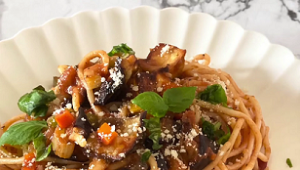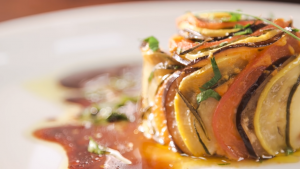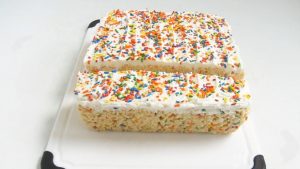Dive into the world of homemade pizza with this classic pepperoni pizza recipe. It's a delightful blend of savory flavors, featuring a homemade dough that's easy to make and incredibly satisfying to eat. You'll get to experience the joy of kneading and rolling out your own dough, topping it with a flavorful sauce, and finishing off with a generous sprinkle of cheese and pepperoni slices. This pizza is perfect for a family dinner or a casual get-together with friends.
Most of the ingredients required for this recipe are easily available in your pantry. However, you might need to pick up a few items such as bread flour, which gives the dough its unique texture and elasticity, and a block of mozzarella cheese, which melts beautifully over the pizza. Fresh herbs like oregano and basil add a burst of flavor, and a good quality pepperoni will make all the difference. Remember to pick up a pizza stone if you don't already have one - it is key to achieving a perfectly crisp crust.
Ingredients for Pepperoni Pizza with Homemade Dough
Active dry yeast: A type of yeast used for making bread. It gives the dough its rise and fluffy texture.
Granulated sugar: Helps to activate the yeast.
Water: A universal solvent, used to bind the dough ingredients together.
Olive oil: Adds richness to the dough and keeps it moist.
Salt: Enhances the overall flavor of the dough.
White vinegar: Helps with the rising process of the dough.
Bread flour: Its high protein content helps create a chewy, elastic dough.
Tomato sauce and tomato paste: These build the base for our pizza sauce.
Honey: Adds a slight sweetness to balance out the tangy tomato sauce.
Fresh oregano and basil: They add a fresh and vibrant flavor to the pizza sauce.
Garlic: Adds a savory depth to the sauce and pizza topping.
Mozzarella cheese: Melts beautifully to create a gooey, cheesy topping.
Parmesan cheese: Has a sharp flavor that complements the other ingredients in the pizza.
Pepperoni: Adds a spicy, meaty flavor to the pizza.
One reader, Benita Strunk says:





This pepperoni pizza with homemade dough recipe is a game-changer! The crust is perfectly crispy, and the flavors are out of this world. The homemade dough is easy to make and tastes so much better than store-bought. It's become a family favorite in our house!
Techniques Required for Making Homemade Pepperoni Pizza Dough
How to prepare pizza dough: Combine yeast, sugar, and warm water in a bowl. Allow to rest, then add olive oil, salt, and vinegar. Mix in flour and knead until smooth. Allow to rise until doubled.
How to make pizza sauce: Combine tomato sauce, tomato paste, olive oil, honey, herbs, and garlic in a bowl. Let rest to meld flavors.
How to assemble the pizza: Divide dough, roll into rounds, and create a rim. Pierce the dough, brush with garlic-infused oil, spread sauce, add cheese and pepperoni. Slide onto a preheated pizza stone and bake until golden. Sprinkle with oregano and red pepper flakes before serving.
How To Make Pepperoni Pizza With Homemade Dough
Personalized your pizza with this pepperoni pizza with homemade dough, pizza sauce, and toppings of your own preference for a filling and delicious meal.
Serves:
Ingredients
For the Pizza Dough:
- 2¼tspactive dry yeast
- 2tspgranulated sugar
- 1½cupswater,warm (about 110 degrees F), divided
- 3tbspolive oil,plus more for brushing
- 1½tspsalt
- 1tspwhite vinegar
- 4cupsbread flour
For the Pizza Sauce:
- 16oztomato sauce,1 can
- ¼cuptomato paste
- 1½tbspextra virgin olive oil
- 1½tsphoney
- 2tspfresh oregano,chopped
- 2tspfresh basil,chopped
- ¼tspdried thyme,fresh
- 1garlic clove,finely minced
- salt and freshly ground black pepper,to taste
For the Toppings:
- 1tbspolive oil
- 1garlic clove,finely minced
- 2cupsmozzarella cheese,shredded
- ¼cupParmesan cheese,finely shredded
- 20slicespepperoni
- 2tbspfresh oregano,chopped if using larger leaves
- red pepper flakes,for serving, optional
Instructions
Pizza Dough:
-
In the bowl of an electric stand mixer, combine yeast, sugar, and ½ cup of warm water and whisk until yeast has dissolved. Allow resting for 5 minutes.
-
Add in the remaining 1 cup of warm water, olive oil, salt, and vinegar. Fit the mixer with the whisk attachment, set on low speed, and slowly add in 1¾ cups of the flour and mix until combined.
-
Switch to a dough hook and slowly add in remaining 1¾ cups flour then knead mixture on medium-low speed for about 5 to 7 minutes, adding in up to an additional ½ cup of flour as needed, until dough is smooth and elastic.
-
Cover the bowl with plastic wrap and allow to rest in a warm place until doubled for about 1½ hours.
Pizza Sauce:
-
Combine all ingredients in a bowl. Preferably let rest for 30 minutes to allow flavors to meld.
To Assemble:
-
Place a pizza stone in the oven and preheat the oven to 450 degrees F. While the oven preheats assemble the pizza. Punch down a pizza dough and divide into two equal 16-ounce portions.
-
Place a sheet of parchment paper over a pizza peel then lightly dust parchment paper with flour.
-
Pat or roll and stretch dough on the pizza peel to a 13-inch round while creating a rim along the edge of the dough.
-
Using a fork, pierce dough many times over the surface.
-
In a small bowl, stir together olive oil with garlic and brush evenly over top and edges of pizza then evenly spread about ⅔ cup of the pizza sauce over pizza.
-
Top evenly with cheeses and pepperoni slices.
-
Carefully slide the pizza on parchment paper to the preheated pizza stone in the oven and bake for 12 to 15 minutes until the crust is golden.
-
Remove from oven, sprinkle top with oregano, and optional red pepper flakes. Cut into slices and serve.
Nutrition
- Calories: 987.18kcal
- Fat: 48.28g
- Saturated Fat: 21.02g
- Trans Fat: 0.13g
- Monounsaturated Fat: 20.37g
- Polyunsaturated Fat: 3.65g
- Carbohydrates: 96.14g
- Fiber: 6.07g
- Sugar: 9.79g
- Protein: 42.83g
- Cholesterol: 105.97mg
- Sodium: 1522.79mg
- Calcium: 759.17mg
- Potassium: 681.62mg
- Iron: 7.43mg
- Vitamin A: 252.49µg
- Vitamin C: 9.79mg
Crucial Technique Tip for Perfect Homemade Pizza Dough
When making your pizza dough, it's important to knead it until it's smooth and elastic. This process develops the gluten in the flour, giving your pizza crust the perfect chewy texture. If the dough is too sticky, add a little more flour, but be careful not to add too much as it can make the dough tough. Also, when you're letting the dough rise, make sure it's in a warm place. Yeast thrives in warm environments and this will help your dough rise properly. Lastly, using a pizza stone can greatly improve the quality of your pizza. It distributes heat evenly, ensuring a perfectly cooked, crispy crust.
Time-Saving Tips for Making Pepperoni Pizza with Homemade Dough
Prepare the dough: Use a food processor to quickly mix and knead the pizza dough, saving time and effort.
Pre-made sauce: Consider using store-bought pizza sauce to save time on making the sauce from scratch.
Pre-shredded cheese: Opt for pre-shredded mozzarella and parmesan cheese to eliminate the time-consuming task of grating the cheese.
Batch cooking: Make a larger quantity of pizza dough and sauce, then freeze the extra portions for future use to save time on prep.
Prep ahead: Prepare the pizza dough and sauce the night before and store them in the refrigerator to streamline the pizza-making process.
Use a pizza stone: Preheat the pizza stone in the oven while assembling the pizza to ensure a crispy crust in less time.
Bake multiple pizzas: If making multiple pizzas, bake them simultaneously to save time and energy.
Substitute Ingredients For Pepperoni Pizza With Homemade Dough Recipe
pepperoni - Substitute with sliced chorizo: Chorizo provides a similar smoky and spicy flavor to pepperoni, making it a great substitute for a different twist on the classic pepperoni pizza.
bread flour - Substitute with all-purpose flour: All-purpose flour can be used as a substitute for bread flour in pizza dough, although the texture may be slightly different.
mozzarella cheese - Substitute with provolone cheese: Provolone cheese has a similar meltability and mild flavor to mozzarella, making it a good substitute for topping a pizza.
tomato sauce - Substitute with marinara sauce: Marinara sauce can be used as a substitute for tomato sauce in pizza, providing a richer and more flavorful base.
tomato paste - Substitute with ketchup: Ketchup can be used as a substitute for tomato paste in pizza sauce, adding a touch of sweetness and tanginess.
pepperoni - Substitute with sliced salami: Sliced salami can be used as a substitute for pepperoni, providing a similar savory and slightly spicy flavor.
bread flour - Substitute with whole wheat flour: Whole wheat flour can be used as a substitute for bread flour in pizza dough, adding a nuttier flavor and more fiber.
mozzarella cheese - Substitute with cheddar cheese: Cheddar cheese can be used as a substitute for mozzarella, adding a sharper flavor and different texture to the pizza.
fresh oregano - Substitute with dried oregano: Dried oregano can be used as a substitute for fresh oregano, providing a similar flavor but in a more concentrated form.
fresh basil - Substitute with dried basil: Dried basil can be used as a substitute for fresh basil in pizza sauce, providing a similar flavor but with a longer shelf life.
pepperoni - Substitute with vegetarian sausage: Vegetarian sausage can be used as a substitute for pepperoni, providing a meat-free alternative with similar seasoning and texture.
bread flour - Substitute with gluten-free flour: Gluten-free flour can be used as a substitute for bread flour in pizza dough, accommodating dietary restrictions.
How to Present This Delicious Homemade Pizza
Elevate the dough: Gently stretch and shape the pizza dough into a perfectly round shape, ensuring it is of even thickness throughout.
Artful sauce application: Use a circular motion to spread the pizza sauce evenly, leaving a small border around the edge for a visually appealing presentation.
Cheese distribution: Evenly distribute the mozzarella and parmesan cheese, ensuring every bite has a perfect balance of flavors.
Pepperoni placement: Arrange the pepperoni slices in a visually appealing pattern, ensuring each slice is evenly distributed for a balanced flavor in every bite.
Garnish with fresh oregano: Sprinkle the pizza with fresh oregano leaves for a pop of color and a burst of fresh flavor.
Add a touch of heat: Sprinkle a pinch of red pepper flakes over the pizza for a subtle kick of heat that enhances the overall flavor profile.
Slice with precision: Use a sharp pizza cutter to slice the pizza into equal portions, ensuring each slice is presented flawlessly.
Essential Tools for Making Pepperoni Pizza from Scratch
- Electric stand mixer: An electric stand mixer is a versatile tool that can be used for mixing and kneading dough, making it an essential tool for preparing the pizza dough.
- Whisk: A whisk is used to combine the yeast, sugar, and warm water for the pizza dough, ensuring the yeast is properly dissolved.
- Bowl: A bowl is needed for proofing the pizza dough and for combining the ingredients for the pizza sauce.
- Pizza stone: A pizza stone is used to create a crispy crust by evenly distributing heat and absorbing moisture from the dough.
- Pizza peel: A pizza peel is a long-handled tool used to transfer the pizza in and out of the oven, making it essential for handling the pizza during baking.
- Parchment paper: Parchment paper is used to prevent the pizza dough from sticking to the pizza peel and to easily transfer the pizza onto the preheated pizza stone.
- Rolling pin: A rolling pin is used to roll and stretch the pizza dough into a 13-inch round shape before assembling the pizza.
- Fork: A fork is used to pierce the pizza dough before baking, preventing air bubbles from forming during the baking process.
- Brush: A brush is used to evenly spread the garlic-infused olive oil over the pizza dough before adding the sauce and toppings.
- Oven: An oven is used for baking the pizza at a high temperature, ensuring the crust is golden and the toppings are cooked to perfection.
How To Store and Freeze Homemade Pepperoni Pizza
To store leftover pepperoni pizza, allow it to cool completely to room temperature. This will prevent the crust from becoming soggy due to condensation.
Once cooled, place the pizza slices in an airtight container or wrap them tightly with plastic wrap or aluminum foil. This will help maintain the pizza's freshness and prevent it from drying out.
Leftover pizza can be stored in the refrigerator for up to 3-4 days. To reheat, place the slices on a baking sheet and bake in a preheated oven at 350°F (175°C) for about 10 minutes, or until heated through and the crust is crispy.
If you want to freeze the pizza for later consumption, wrap the individual slices tightly with plastic wrap and then place them in a freezer-safe container or freezer bag. Label the container with the date and contents for easy reference.
Frozen pizza can be stored in the freezer for up to 2-3 months. When ready to eat, remove the desired number of slices from the freezer and let them thaw in the refrigerator overnight.
To reheat frozen pizza slices, place them on a baking sheet and bake in a preheated oven at 350°F (175°C) for about 15-20 minutes, or until heated through and the crust is crispy. You can also reheat the slices in a microwave, but the crust may become soft and lose its crispiness.
For best results, consume frozen pizza within 1-2 months to maintain its quality and flavor. After that, the pizza may start to develop freezer burn and lose its texture and taste.
How To Reheat Leftover Pepperoni Pizza
The best way to reheat leftover pepperoni pizza is in a preheated oven at 350°F (175°C) for about 10 minutes or until the cheese is melted and the crust is crispy. Place the pizza slices directly on the oven rack or on a baking sheet lined with parchment paper for easy cleanup.
For a crispy crust, you can also reheat the pizza in a cast-iron skillet or non-stick pan over medium heat. Add a few drops of water to the pan and cover it with a lid to create steam, which will help melt the cheese and prevent the crust from drying out. Cook for 5-7 minutes or until the cheese is melted and the bottom of the crust is crispy.
If you're in a hurry, you can reheat the pizza in the microwave, but be aware that this method may result in a softer crust. Place the pizza slices on a microwave-safe plate and heat them on high power for 30-60 seconds, depending on the thickness of the crust and the number of slices.
For a crispy crust and melted cheese, you can also use a combination of the microwave and oven methods. Microwave the pizza for 30-60 seconds to warm it up, then transfer it to a preheated oven at 450°F (230°C) for 2-3 minutes to crisp up the crust.
If you have an air fryer, you can use it to reheat your leftover pizza. Preheat the air fryer to 350°F (175°C) and place the pizza slices in the basket, making sure they don't overlap. Cook for 3-5 minutes or until the cheese is melted and the crust is crispy.
Interesting Fact About Pepperoni Pizza
The pizza was first invented in Naples, Italy, and was originally considered a food for the poor. It was sold in the streets and was a simple flatbread topped with tomatoes and cheese. Over time, it gained popularity and evolved into the delicious and diverse dish we know today.
Is Making Pepperoni Pizza with Homemade Dough Cost-Effective?
This pepperoni pizza with homemade dough recipe is quite cost-effective for a household. The ingredients are commonly found in most kitchens, and the homemade dough is more economical than store-bought. The use of pepperoni and mozzarella cheese may be the most expensive components, but the overall cost is reasonable. The approximate cost for a household of 4 people would be around $15-$20. Rating: 9/10.
Is Pepperoni Pizza with Homemade Dough Healthy or Unhealthy?
The pepperoni pizza with homemade dough recipe is not particularly healthy due to several factors:
- The dough is made with refined bread flour, which is low in fiber and nutrients compared to whole grain flours
- The recipe includes a significant amount of cheese, which is high in saturated fat and sodium
- Pepperoni is a processed meat that is high in sodium, saturated fat, and preservatives
- The recipe does not include any vegetables or other nutrient-dense toppings
While the homemade sauce does include some fresh herbs and garlic, which offer some nutritional benefits, overall this pizza recipe is high in calories, fat, and sodium, and low in fiber, vitamins, and minerals.
To make this pizza recipe healthier, consider the following suggestions:
- Replace half or all of the bread flour with whole wheat flour to increase the fiber and nutrient content of the crust
- Reduce the amount of cheese used, or opt for a lower-fat cheese like part-skim mozzarella
- Replace the pepperoni with a leaner protein source, such as grilled chicken or turkey sausage
- Add more vegetables to the pizza, such as bell peppers, onions, mushrooms, or spinach, to increase the fiber, vitamin, and mineral content
- Use a smaller amount of olive oil in the sauce and for brushing the crust to reduce the overall fat content
By making these adjustments, you can create a more balanced and nutritious pizza that still satisfies your cravings for a delicious homemade pie.
Editor's Opinion on This Homemade Pepperoni Pizza Recipe
The recipe for pepperoni pizza with homemade dough is a classic and delicious choice. The homemade dough adds a wonderful depth of flavor and texture to the pizza. The sauce is well-balanced with the perfect combination of herbs and spices. The use of high-quality cheeses and pepperoni ensures a rich and savory flavor profile. The detailed instructions make it easy to follow, and the end result is a mouthwatering, restaurant-quality pizza that is sure to impress. Whether for a family dinner or a gathering with friends, this recipe is a winner.
Enhance Your Pepperoni Pizza With Homemade Dough Recipe with These Unique Side Dishes:
Similar Recipes to Pepperoni Pizza with Homemade Dough
Perfect Appetizers and Desserts to Pair with Homemade Pepperoni Pizza
Why trust this Pepperoni Pizza With Homemade Dough Recipe:
This recipe guarantees a delicious pepperoni pizza experience. The homemade dough is crafted with care, ensuring a perfect crust every time. The pizza sauce is made from scratch, using only the freshest tomato sauce and herbs. The toppings are carefully selected, including premium mozzarella cheese and savory pepperoni slices. With detailed instructions and quality ingredients like bread flour and extra virgin olive oil, this recipe promises an authentic, restaurant-quality pizza that you can trust and enjoy.
Was this page helpful?
Have your own special recipe to share? Submit Your Recipe Today!














